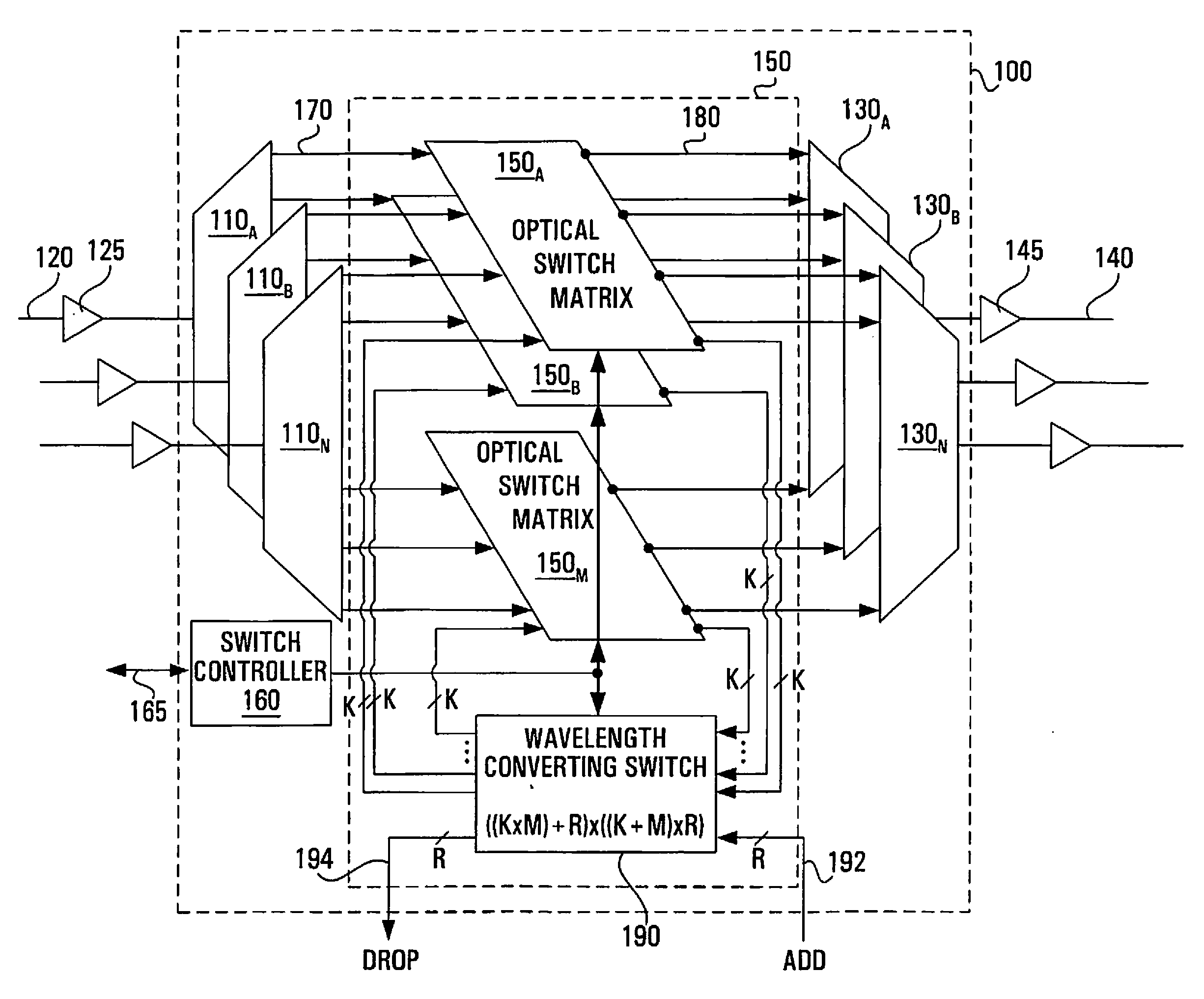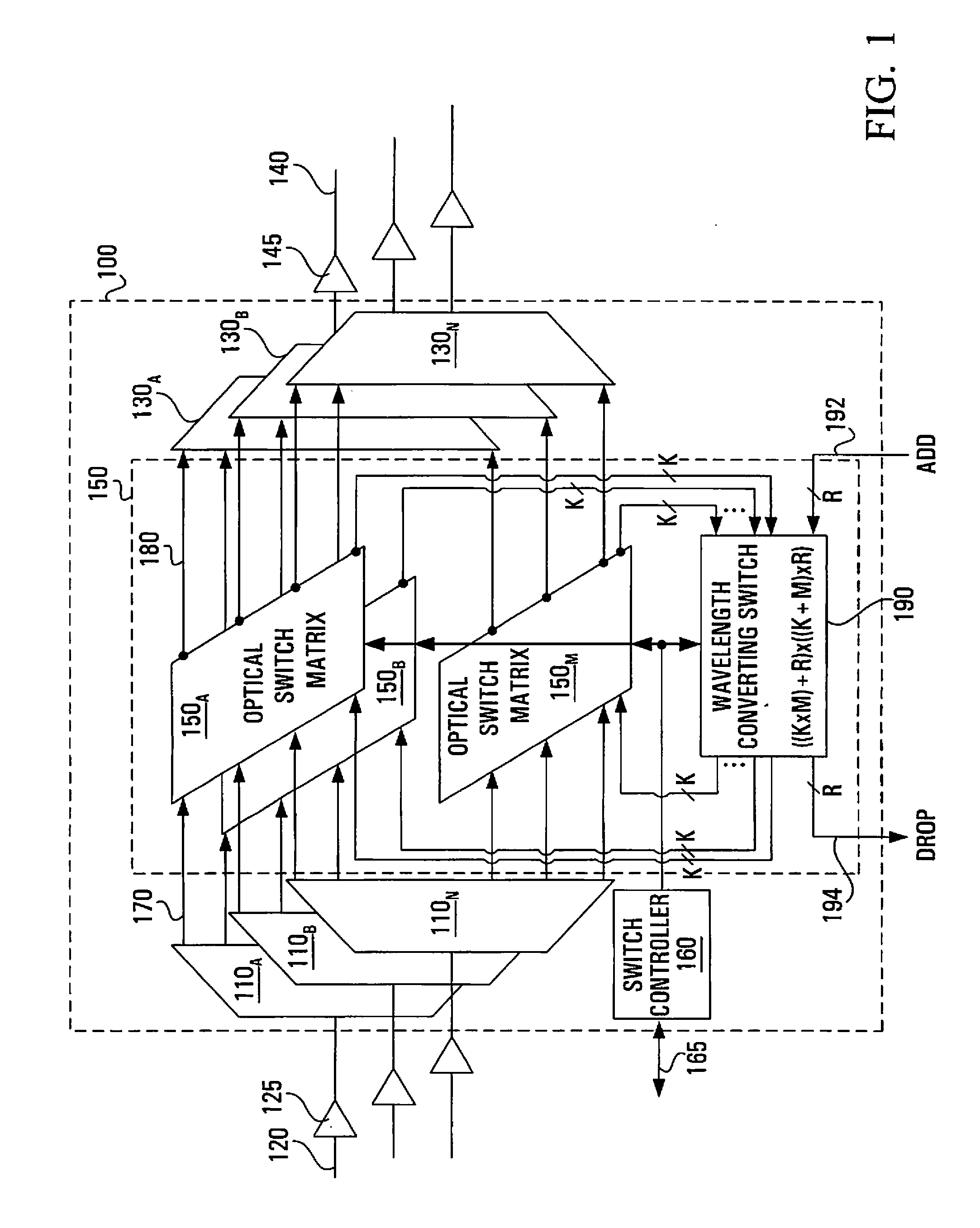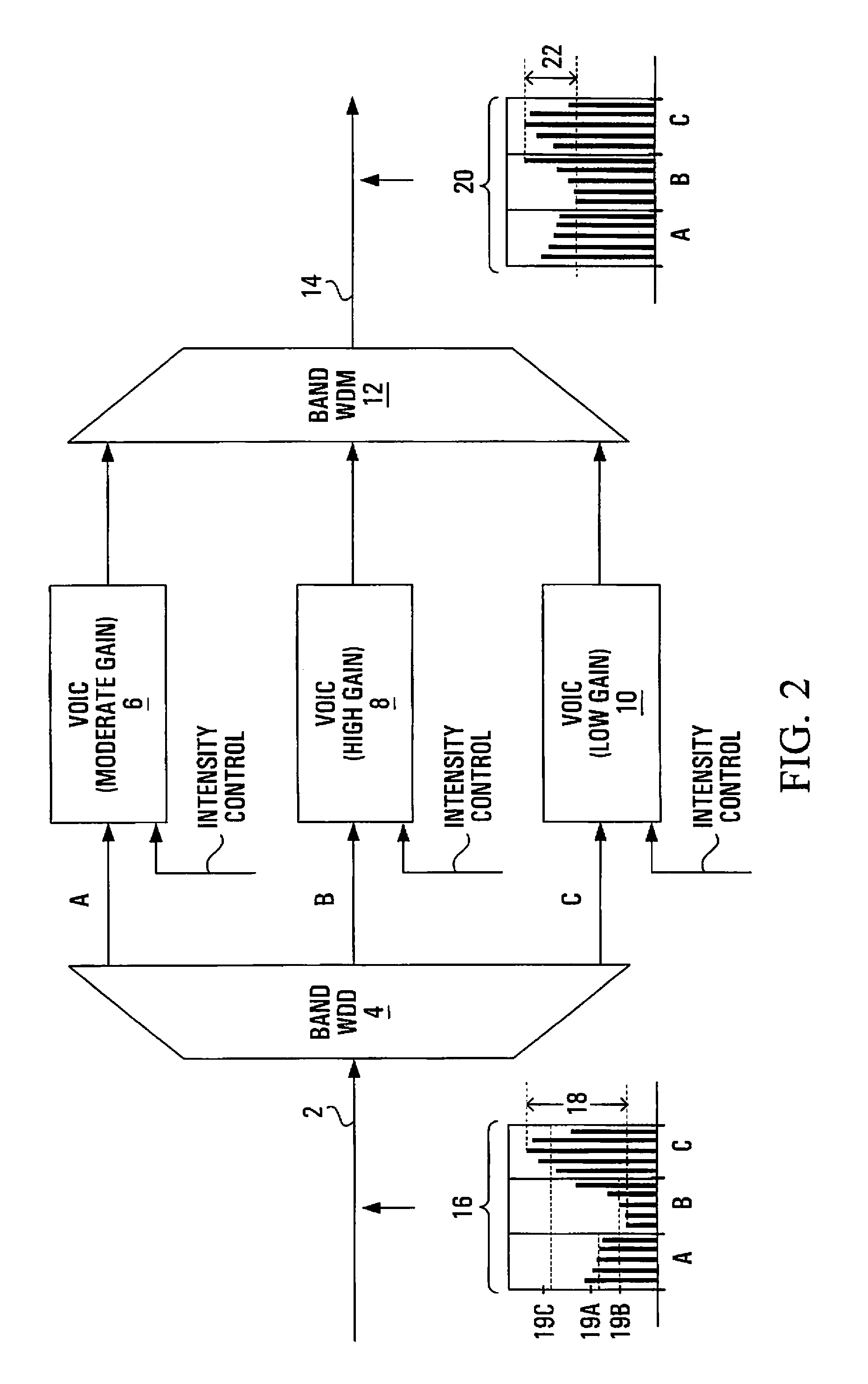Optical switch with power equalization
a technology of optical switches and equalization, applied in the field of optical switches with power equalization, can solve problems such as reducing the complexity of equalization systems, and achieve the effect of increasing the complexity of switch design
- Summary
- Abstract
- Description
- Claims
- Application Information
AI Technical Summary
Benefits of technology
Problems solved by technology
Method used
Image
Examples
Embodiment Construction
[0091]With reference to FIG. 4, there is shown a photonic switch 400 according to an embodiment of the present invention. The photonic switch 400 resembles the photonic switch 100 of FIG. 1 in that it retains the basic structure including the WDD devices 110A-110N, the WDM devices 130A-130N and the photonic switch core 150.
[0092]The photonic switch 400 of the invention additionally comprises a plurality (M×N) of variable optical intensity controllers (VOICs) 410 respectively positioned in each of the demuxed switched optical paths 180. Thus, each of the VOICs 410 is associated with a respective switched individual optical carrier signal that emerges from the photonic switch core 150 along a respective one of the demuxed switched optical paths 180.
[0093]The VOICs 410 are used for providing intensity control in the form of either attenuation or amplification. Thus, each of the VOICs 410 can either be a variable optical attenuator or a variable optical amplifier, depending on the opera...
PUM
 Login to View More
Login to View More Abstract
Description
Claims
Application Information
 Login to View More
Login to View More - R&D
- Intellectual Property
- Life Sciences
- Materials
- Tech Scout
- Unparalleled Data Quality
- Higher Quality Content
- 60% Fewer Hallucinations
Browse by: Latest US Patents, China's latest patents, Technical Efficacy Thesaurus, Application Domain, Technology Topic, Popular Technical Reports.
© 2025 PatSnap. All rights reserved.Legal|Privacy policy|Modern Slavery Act Transparency Statement|Sitemap|About US| Contact US: help@patsnap.com



